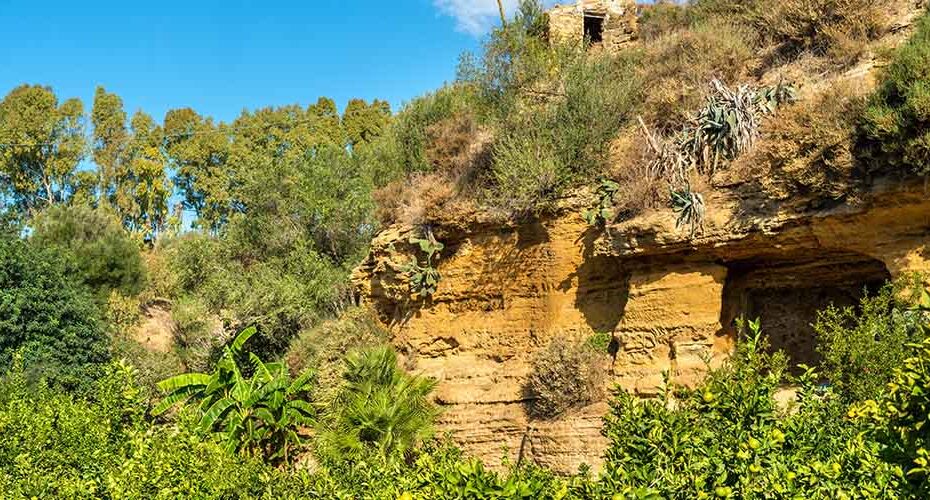The Garden of Kolymbethra is a five hectare area within the archaeological area of the Valley of the Temples. It is a true archaeological and scenic jewel that became one of the essential destinations of the Grand Tour between the 19th and 20th centuries. The FAI Association has been managing the Kolymbethra Garden since 1999 and has succeeded in restoring the site to its original splendor after years of neglect. A visit to the garden gives access to the Temple of Hephaestus and is also one of the stops on the Akragas Express train line.
The history of the Kolymbethra Garden
The history of the Garden of Kolymbethra dates back to 480 B.C., the year of the Battle of Himera. In this battle, the army of Agrigento, allied with that of Syracuse, prevailed over the army of Carthage. The tyrant Theron had the captured Carthaginians dig a network of drainage tunnels for the water supply of Akragas. These culminated in a very large pool known as the Kolymbethra. Initially used as a fish nursery and frequented by swans and other birds, the basin was filled in the first century AD. The area became a fertile orchard. Over the centuries, the management of this area passed to the Church, which also introduced the cultivation of citrus fruits. This is how it came to be called “garden”, the name given to citrus groves in Sicily. From the 80’s, with the disappearance of the old farmers, the area was abandoned. In 1999, the Region of Sicily entrusted the Kolymbethra Garden to the FAI (Italian Environmental Fund), which succeeded in restoring the area to its former glory.
The vegetation of the Kolymbethra Garden
The very rich vegetation within the Kolymbethra Garden can be divided into five categories. The first is the citrus grove where there are bitter orange, mandarin, lemon, grapefruit and clementine trees. There are also several varieties of sweet orange trees such as Tarocco, Brazilian, Vanilla and Vanilla Rose. Finally, within the citrus grove there are also other species of trees such as mulberry, plum, loquat, pear, azarole and fig. Instead, along the walls of Kolymbethra is the area with almond and olive trees, which represent the dominant plant component of the entire Valley of the Temples. In fact, every year this archaeological area is the setting for the spectacular Almond Blossom Festival. Near the waterways of the garden, the riparian vegetation is made up of hydrophilic plants such as reeds, Salix pedicellata, Tamarix africana and castor bean. The rocky vegetation grows on the rocky outcrops. Among the various species we can find disa, common broom, phlomis fruticosa and caper. Finally, there are the typical Mediterranean scrub plants such as carob, lentisk, terebinth and euphorbia.
The hypogeum of the Kolymbethra
From 2017, thanks to the collaboration between FAI and the Association “Agrigento Sotterranea”, it will also be possible to visit the “Phaeacian Aqueducts” by entering the Kolymbethra Garden. This is one of the 18 Greek hypogea found in Agrigento and built by the architect Phaeacius around the 5th century BC. This hypogeum is characterized by a planimetric development of about 185 meters, with a height difference of about 11 meters. The Association provides visitors with safety helmets with headlamps to enjoy this experience in total safety.
How to get to the Garden of Kolymbethra
The Garden of Kolymbethra is located within the archaeological area of the Valley of the Temples in Agrigento, in the area between the Temple of Castor and Pollux and the Temple of Hephaestus (or Vulcan). Since it is managed by the FAI, access to this area requires a separate ticket purchase. This can be done directly at one of the ticket offices or online at the Archaeological Park website. Access to the Garden of Kolymbethra also allows you to visit the Temple of Hephaestus.
Aggiungi ai preferiti
















